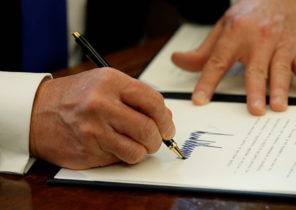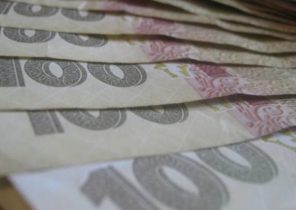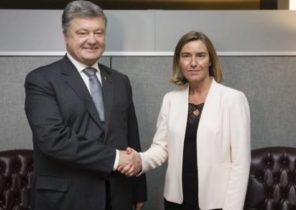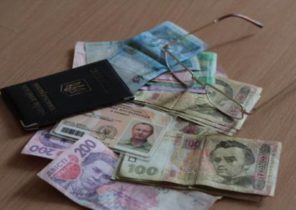
In this period, when markets are driven mainly by policy, certain signals from the White house was enough for leading us indices finished last week with new records, and the dollar rose as he is not growing for months. Actually, the daily exchange rate growth was the most prolonged since November of last year. Moreover, since real data suggests that the fed will postpone the March rate hike, the yield on U.S. Treasury bonds was stable, and it is possible to remove the concern of investors about the stability and sustainability “trunovskogo increase”.
Good mood in the market was not limited to America. They spread to other stock markets in the world. Courses have grown to such a level we have not seen in a long time. Even in Europe there was an increase, despite the new alarm over Greek debt and the growth of political risks in connection with the upcoming April presidential elections in France.
An important factor contributing to the rise was the promise of President Donald trump to hold a “phenomenal” tax reform. But this is not the only factor. Markets cheered after the President talks with Japanese Prime Minister Shinzo Abe, who was in the US on an official visit. The conciliatory tone of the conversation eased the fears of American protectionism and global trade wars.
But the growth of quotations last week should not be regarded as a breakthrough in the upward direction. Rather, it is an integral part of a more volatile period for the stock after the election trump. In his article in Bloomberg View I call it “the third phase trunovskogo increase”. Fluctuations last week, including changes during the day, differed sharply from the much smaller amplitude of trades, which prevailed in the previous step. But overall growth has been very moderate compared to the first phase trunovskogo increase (this is the period from election day to mid-December).
In this state of asset prices weaken the balance of the two types of competing political influence on the stock. The first type is theoretically promises the restoration of fallen prices on the news about tax reform, about the infrastructure and deregulation; and the second increases the risk of stagflation — especially trade protectionism, calling the response from other countries. As a result, any political actions can have a greater impact on prices. In addition, after the inauguration of the President and against the background of its political activity to traders becoming increasingly difficult to maintain patience.
The next phase is likely to become a point of separation, and it is determined by two characteristics (time and direction) that have an important relationship with politics.
Given the political instability and the huge number of new economic assignments and problems is difficult to predict how long this phase, and how noisy it will be. The direction of further isolation is now also difficult to predict due to the competing driving forces that are not constrained to the USA.
To the third phase “trunovskogo increase” provided another large and steady climb courses, place the statements and promises of a policy of growth must take detailed and careful planning, and then a sensible implementation of joint efforts of the administration and Congress. You will also need progress in a better way in the politics of other countries, especially China, Europe and Japan to further strengthening of the dollar did not create significant problems for corporate indicators and fueled protectionist forces in the United States. Conversely, the slide of America to protectionism can cause stagflation trends that will create downward pressure on stocks and other risky assets. This pressure will be particularly intense if it was accompanied by political developments in Europe (such as the election of marine Le Pen President of France), which will cause doubts about the safety and proper functioning of the Eurozone.
This dark contrast (or bipolar world, as he was named last week the head of the giant firm’s asset management BlackRock Larry Fink (Larry Fink)) should not cause much surprise. It is an integral part of a more General phenomenon related to a bimodal distribution of possible outcomes, about which I wrote in previous articles, and which I describe in my book The Only Game in Town. Global economy and markets are in transition from a period defined by three factors: first, it is global growth, even if too weak and not sufficiently integrated, but relatively stable; second, the ability and willingness of strategic Central banks to suppress financial volatility; and thirdly, it is extremely volatile internal and international politics, which has failed to significantly influence economic policy and economic events.
This world with its “new rules” gradually coming to an end. This process will be volatile for markets that compete relazione and stagflationary tendencies — until then, until there is a breakthrough and will not change dramatically the situation.
The content of the article may not reflect the views of the editorial Board, Bloomberg LP and its owners.
Mohamed El-Erian is a Bloomberg View columnist, chief economic adviser to Allianz, Chairman of the presidential Council for global development. He previously worked as the Executive Director and one of the main investment managers Pimco. One of his books called The Only Game in Town: Central Banks, Instability, and Avoiding the Next Collapse (For lack of the best: Central banks, instability and preventing the next collapse).







